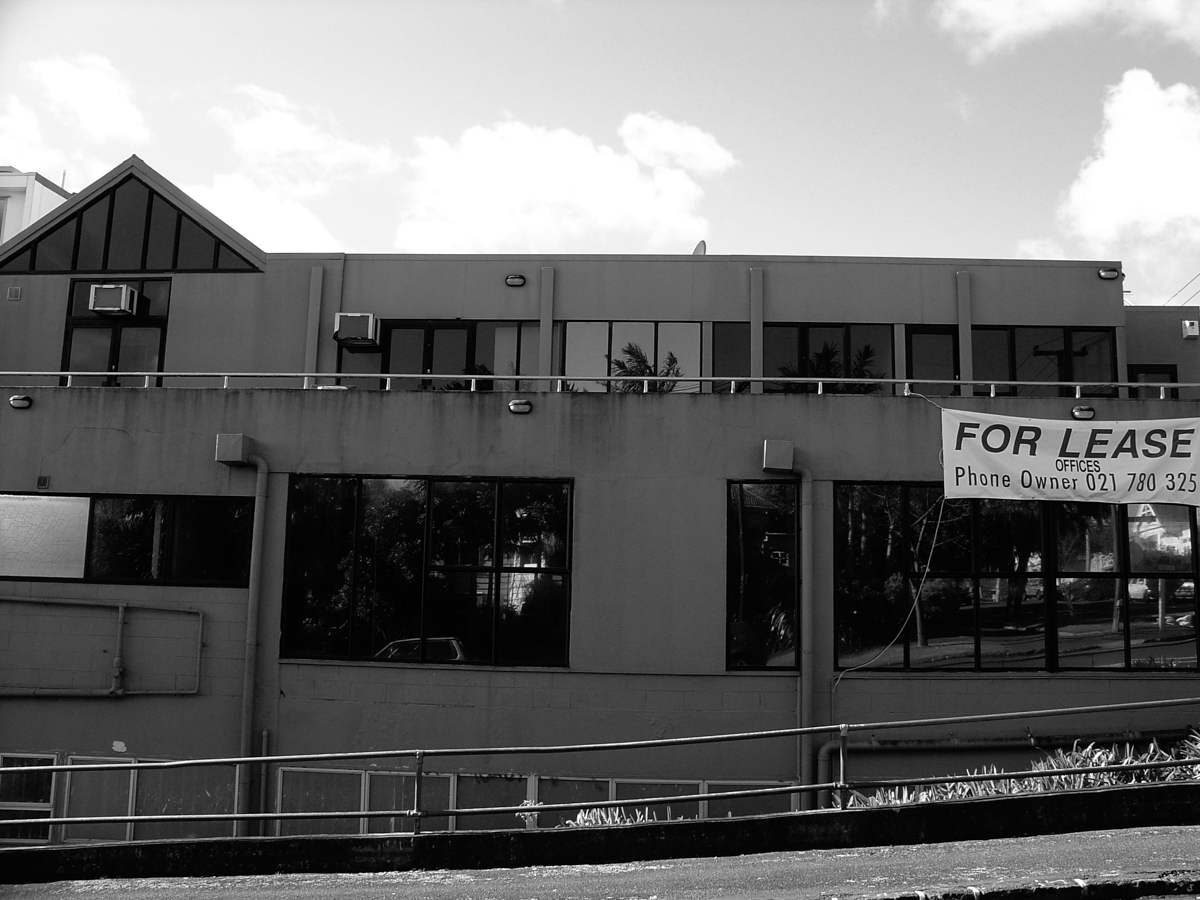Crummer Rd. – Hamish Win

Looking at this photo and remembering Luke’s text from The National Grid #3 the first thing that strikes me is that Rebecca Li will be free now. More likely though she’s been free for quite awhile. After all it was in 2006 that she was sentenced to four years in prison for the forgery of tertiary degrees, birth certificates, language school diplomas, immigration stamps, tax invoices, driver licenses and disability permits. Perhaps then she’s re-occupied her semi- abandoned premises, unlikely though, but maybe such visibility is less a trap than an exuberantly naive disguise. Hardly! But the very thought gives rise to the afterlife of counterfeiters whose sentence to society has run its course. Do they emerge as chastened penitents, harboring a new found respect for the authenticity of the document. I very much doubt it, even if we are to believe the Leonardo DiCaprio film1 in which his chastened counterfeiter winds up working for the government, policing and officiating the measures that stop forgeries entering into the network. Maybe, but even he did that reluctantly and besides which, this speculation is beside the point. The idea here is not to get caught in the first place. After all Luke was talking about circulation and the ordinary, vernacular tactics of the everyday, not visibility. That’s why I imagine he ran that image of the ordinary office block, its slightly decrepit, mundane ratios. Hiding in the light, going with the stream.
When you look over the list of documents Li was forging you notice that they all have to do with processes of citizenship. In an age when we talk of the biopolitical apparatus of the state whose sovereignty is determined not by the right to take life but rather to give life, to organise life, to design life, what better proof could we need than this list of fake accreditations. That even entities that escape one system, only to orbit another, are compelled to enter into a contractual arrangement, to become entities within this documented idiom of the state’s persona. This is perhaps the real threat behind Li’s counterfeiting which may explain the length and severity of her sentence, at least when compared to the community service hours handed out to her contemporaneous fraudsters, those directors of Lombard Finance whose Ponzi scheme corrupted a different sort of information flow but significantly stripped (robbed) real wealth from citizens rather than simply, as in the case of Li, providing the ability to be citizens. That is an affront the state cannot afford to be so ignorant of. But again this is not really the point. Luke was talking of a graphic design that “has nothing at all to do with originality, innovation or style but is refreshingly common and ephemeral,” more interested in “systems, relational structures and networks of distribution, than objects, artefacts and aesthetics.” To my mind that still rings as a compelling statement, even if the widespread adoption of Seth Price’s ‘Dispersion’ as a text-de-jour and the sweltering credibility of Metahaven have made these principles almost de-facto within contemporary discourse. Perhaps then its worth comparing these preoccupations with informatic flows and Li’s own semblance to the Mexican artist Minerva Cuevas, who’s Major Vida Corporation creates fake student identification cards (no laughing matter when that can get you a 50% discount on domestic air travel) or barcodes that lower prices amongst an array of similarly minded activity designed to blend into the apparatuses through which our lives are marshalled. That at least gives some semblance to the potential contained within these discourses, something Luke himself toyed with around the time he was writing the original article, with his idea to mock up printable pdf forms for parking tickets. Perhaps though now that might extend to supermarket vouchers for cheaper petrol, complimentary beverages with movie tickets... As Roberto Saviano points out in Gomorrah (2006) contrary to its mythology the free- trade economy exists only in non-regulated criminal under-markets like those of Naples’s Secondiglio (the name says as much).2 In fact it wasn’t till reading Saviano that I really grasped Manuel de Landa’s contrary idea that capitalism is better conceived of as a series of anti-markets, that is as a developmental string of outright monopolies.3 Finding the gaps through which to gain purchase upon such structures, as well as the disciplinary apparatus through which our subjectivity is neutralised, is surely something design ought to be more than capable of. Perhaps that’s why Luke ran that photo of the abandoned office block, he was calling for Li’s successor.